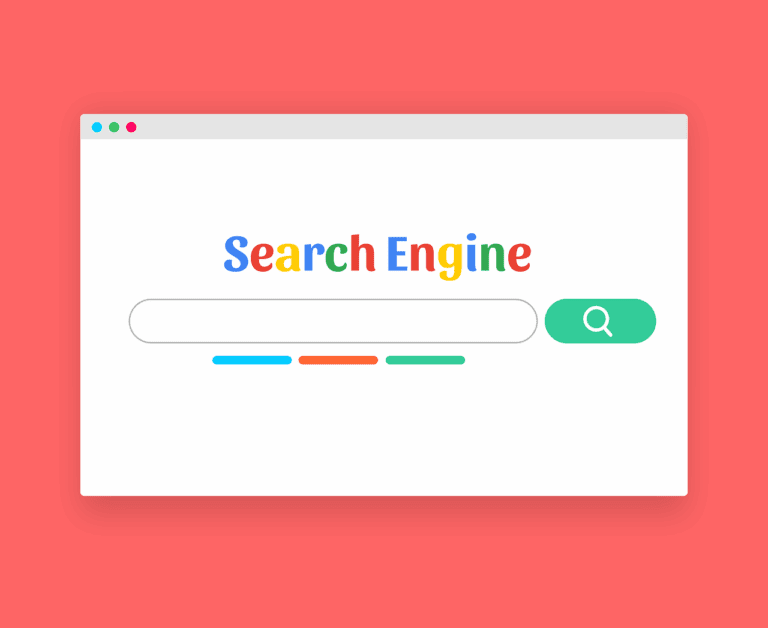Managing an eCommerce or B2B website? You’ve probably heard of internal linking and anchor text before. But why is it so important, and how can you use it to help boost the visibility of your site and your authority within your field?
Here at Neural Edge, we’re committed to helping you get a firm grasp on your SEO and identify the areas you need to improve within your website’s SEO strategy to elevate user engagement.
Using internal linking and anchor text effectively is an essential aspect of SEO strategy that often goes unnoticed, but it’s crucial for optimising user experience and search engine ranking.
Understanding Internal Linking For SEO

Having a well-thought-out internal link strategy is not only beneficial for improving your SEO, but it also provides a seamless user experience.
By strategically linking relevant pages within your website, you can guide visitors to explore more of your valuable content.
This increases the visibility of your pages and enhances user engagement and satisfaction. It’s a true win-win situation that can greatly contribute to the success of your online presence.
What Are Internal Links?
Internal links are hyperlinks that direct to different pages within the same domain. They establish a hierarchy and aid in navigation, essentially shaping the architecture of your website.
From an SEO standpoint, these links spread the ‘link equity’ around your website, improving the ranking potential of your individual pages on search engines.
By effectively using internal links, you can enhance the visibility of less prominent pages and create a cohesive, user-friendly website structure.
These links also enable search engine crawlers to understand the relation and context between different pages, thereby improving your website’s indexing and overall SEO performance.
Some examples of internal links are:
| Type of Link | Description |
| Informative Links | Links that direct people to pages where they can find more information about a specific topic. |
| Topic Clusters | Grouping multiple pages under a central “hub” or pillar page that provides comprehensive coverage of a particular subject. |
| Product/Service Links | Internal links that guide users back to specific offerings when your content naturally refers to your products or services. |
| Call to Action (CTA) Links | Links that encourage users to take action, such as filling out a contact form, subscribing, or making a purchase. |
The Interplay of Internal Links, Site Structure, and UX
The relationship between internal links, site structure, and user experience is a game of collaboration. The site structure is essentially the backbone of your website, dictating how the content is organised and presented. It is within this structure that internal links operate, connecting related pages and distributing link equity.
A well-thought-out internal linking strategy can significantly enhance the user experience (UX). It does so by promoting easy navigation, thereby allowing users to effortlessly explore related content and gain a broader understanding of what your website offers. This not only keeps them engaged but also increases their dwell time, which is a positive signal to search engines.
From an SEO perspective, a sensible site structure with effective internal linking allows search engine crawlers to easily traverse your website, understanding the relationship between various pages.
This facilitates efficient indexing, contributing to your site’s visibility on search engine result pages (SERPs). Therefore, a harmonious interplay between internal links, site structure, and UX is integral to the success of your website’s online performance.
What is Anchor Text & Why is it Important?

Anchor text is a word or phrase that features a hyperlink that leads users to another page or location within the same website or an external website. It is typically underlined or highlighted in blue to visually distinguish it from the rest of the text.
The significance of building anchors in internal linking lies in its ability to provide context to both users and search engines about the linked page. Well-crafted anchor text can improve your site’s relevance and the overall user experience because it makes your content more accessible and easier to navigate.
Also, it can play a pivotal role in strengthening your SEO strategy. Search engines utilise anchor text to understand the content and relevance of the linked page, influencing its ranking in search results.
Hence, carefully chosen and relevant anchor text can boost your website’s visibility and ranking performance in search engine results.
Here are some anchoring examples for different types of anchor text:
| Type of Anchor Text | Description | Examples |
| Exact-match | If the anchor text contains a keyword that reflects the linked page, it is considered an “exact match”. | ‘best dog food’ linking to a page about best dog food products. |
| Partial-match | If the anchor text includes some variation of the linked page’s keyword, it’s considered a “partial-match”. | ‘high-quality pet supplies’ linking to a page that offers various pet products. |
| Branded | Branded anchor text is when a brand name is utilised as anchor text. | ‘Neural Edge’, linking to an article on the Neural Edge Blog. |
| Naked link | A “Naked Link” is when a URL is used as the anchor text instead of a keyword or a phrase. | ‘https://neuraledge.digital/‘ |
| Generic | If the anchor text is a generic word or phrase, it’s known as a generic anchor. | ‘Click Here’ linking to a page or product your copy has discussed. |
| Images | When an image is linked in your copy, Google utilises the text from the image’s alt attribute as the anchor text. | (No specific example provided) |
Why is Anchor Text Important to On-Page SEO?
Search engines rely on anchor text to understand the context of the linked page. Without it, they don’t know what you’re linking to or why. That’s why it’s crucial to have relevant and well-crafted anchor text for your internal links, such as the examples of anchoring mentioned above. It’s an opportunity to boost your page’s ranking for relevant keywords.
SEO Best Practices for Choosing the Right Anchor Text

When deciding on anchor text for your internal links, there are several best practices to keep in mind to ensure maximum effectiveness:
Relevance of the Text
Your anchor text should accurately reflect the content it links to. This provides users with a clear expectation of what they will find when they follow the link, enhancing user experience and satisfaction.
Context of the Text & Link
The anchor text should make sense within the context of the surrounding content. It should flow naturally within the sentence or paragraph rather than being awkwardly inserted for the sake of including a link.
The Brevity of the Anchor Text
While it’s important to be descriptive, try to keep your anchor text concise. A few well-chosen words are usually sufficient to provide context and encourage users to click.
Avoid Generic Text
Try to avoid generic phrases such as “click here” or “read more”. These don’t provide users or search engines with any useful information about the linked content.
Keyword Incorporation
Where appropriate, incorporate relevant keywords into your anchor text. This can help an SE crawler understand the context of the linked page, potentially improving its ranking in search results. This is known as rich anchor text.
| Remember, the goal of your anchor text is to enhance user experience and guide both users and search engines to relevant content on your site. If you keep these best practices in mind, you can create effective, user-friendly internal links that can enhance your site’s navigation, user engagement, and SEO performance. |
Strategies for Effective Internal Linking

Internal linking is not merely about adding links; there’s a strategic methodology that should be implemented to ensure maximum effectiveness. Here are a few strategies that can be employed to enhance your internal linking efforts.
1. Logical Link Placement
Always place your internal links where they make the most sense. They should seamlessly fit into the context of your content, providing additional information or resources relevant to the topic being discussed. Randomly placed links that lack context can confuse readers and prove counterproductive.
2. Strategic Link Distribution
It’s crucial not to overlook the importance of a balanced link distribution in your internal linking structure. Ensure that all your important pages receive a fair share of internal links. This helps distribute ‘link equity’ evenly across your site, enhancing the SEO performance of each page.
3. Use of Deep Links
Avoid linking only to your homepage or main category pages. Instead, utilise ‘deep links’ that point to specific, in-depth content pages. This allows users to delve deeper into your site, improving their engagement and satisfaction levels.
4. Prioritise High-quality Pages
Internal links should guide users to your best, most informative content. Prioritise linking to pages that provide high value to the user, thereby improving their experience and increasing the likelihood of repeat visits.
5. Consistency and Maintenance
Consistency is key in internal linking. Maintain the relevancy and functionality of your links with regular reviews and updates. Broken or irrelevant links can harm your site’s user experience and SEO performance.
| If you implement these strategies, you can develop an effective internal link structure that enhances both user experience and your site’s SEO strength, leading to improved online visibility and increased engagement. |
Common Mistakes in Internal Linking and Anchor Text Usage

When implementing an internal linking strategy, there are a few common mistakes that can potentially undermine your SEO efforts. Here’s a look at some of these pitfalls and suggested ways to avoid them.
1. Overuse of Exact Match Anchor Text: While it might seem logical to always use exact match anchor text for SEO purposes, this can lead to over-optimisation, which search engines may view as manipulative.
2. Excessive Internal Linking: While internal linking is beneficial, including too many links in your content can confuse readers and dilute link equity.
3. Ignoring the Value of Unlinked Pages: Not every page needs to be linked to. Some pages, like terms and conditions or privacy policies, offer little value in terms of SEO or user engagement and can be linked to from the footer.
4. Broken or Irrelevant Links: Broken or irrelevant links can frustrate users and damage your site’s credibility. Perform regular audits of your site to fix or remove any broken links that go to dead internal or external pages.
5. Neglecting Anchor Text Relevance: Anchor text should provide clear, accurate information about the linked page. Using misleading or irrelevant anchor text can confuse readers and negatively impact your SEO.
| By avoiding these common mistakes, you can maximise the benefits of your internal linking strategy, improving both user experience and SEO performance. |
The Neural Edge Approach
At Neural Edge, we’ve created an award-winning strategic process to internal linking and anchor text usage in our clients’ content.
Many websites have plenty of opportunities for valuable internal linking or anchor text that requires an update.
It only requires a small investment of time, and the benefits can be substantial. Therefore, we strongly advise conducting an internal linking SEO audit for your website to identify areas where you can enhance both user experience (UX) and search engine optimisation (SEO).
If you need assistance with your SEO and online marketing, please don’t hesitate to reach out to us.
FAQs
The anchor text is the clickable words that make up a hyperlink, typically underlined or highlighted for emphasis. It provides users and Search Engines with contextual information about the content of the linked page. Anchor text can be an exact match, partial match, branded, generic, or naked URL and plays a pivotal role in user navigation and SEO performance.
An example of an internal link could be a hyperlink on your ‘home’ page that navigates to your ‘About Us‘ page. The anchor text for this link might simply be ‘About Us’, and it would lead users from one page of your website to another, thus keeping them engaged and encouraging them to explore more of your site.
Optimising anchor text involves crafting meaningful, concise text that accurately reflects the content of the linked page. Where appropriate, incorporate relevant keywords to aid search engine indexing. However, avoid overusing exact-match anchor text, as this can appear manipulative. Aim for a balanced mix of exact-match, partial-match, and natural language anchors. Better anchor text enhances the overall user experience, providing context and encouraging engagement.
Yes, anchor text matters significantly for both users and search engines. For users, it provides context about the linked page, providing an important piece of information and improving navigation and user experience. For search engines, anchor text offers insights into the linked page’s content, aiding in indexing and affecting SEO performance. However, it’s essential to use relevant and diverse anchor text to avoid over-optimisation and maintain a natural linking profile.





